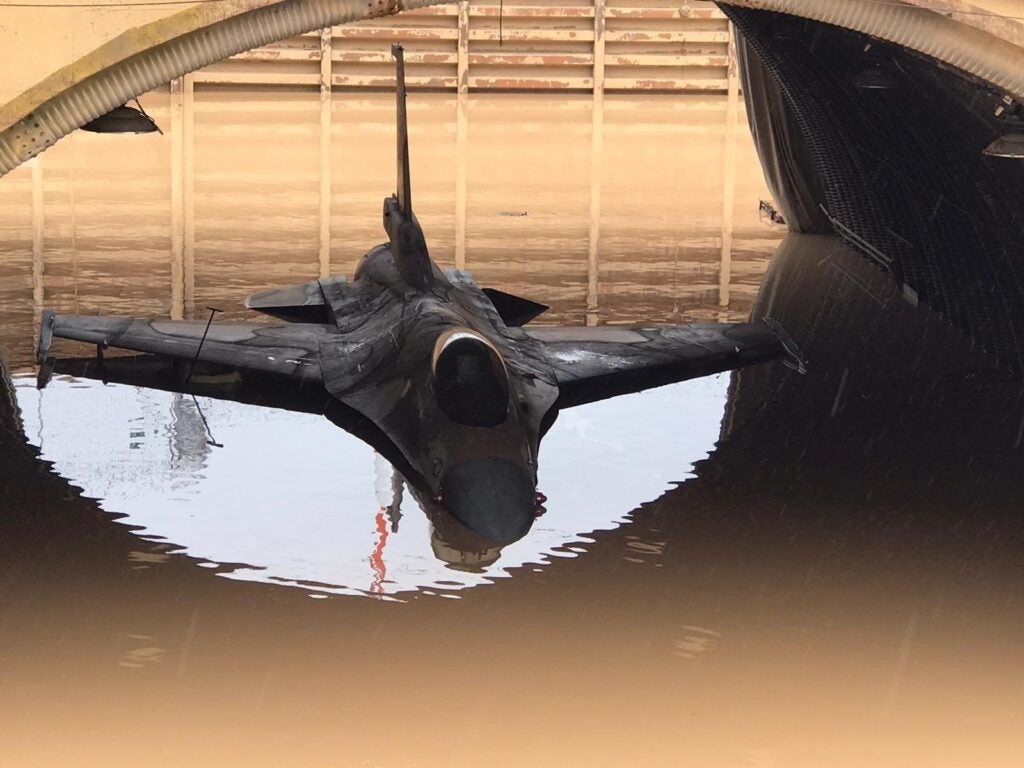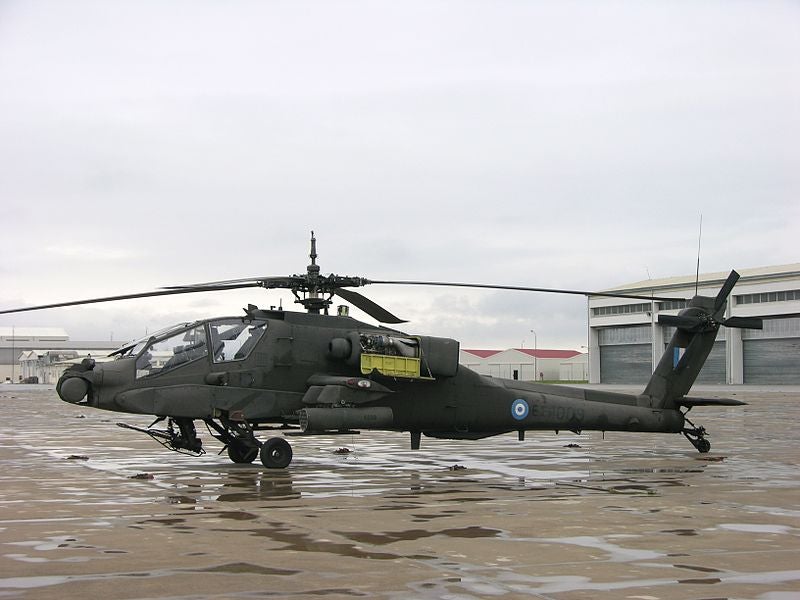Helicopters Stationed at Stefanovikeio Air Base of the Hellenic Air Force Damaged by Storm Daniel
Storm Daniel’s heavy rains in Greece caused a major disaster, resulting in loss of life in the cities of Volos, Larissa, Karditsa, Trikala, and their surrounding villages. The storm, which lasted a day in Central Greece, had a negative impact on the Stefanovikeio Air Base, which is located between the cities of Volos and Larissa, as well as civilian settlements. Dozens of helicopters at the base where the Hellenic 1st Army Command’s Aviation Brigade was stationed were submerged in a flood caused by heavy rain.
In the images shared by the Greek media, it was seen that many UH-1H Utility Helicopters, a Super Puma transport helicopter and an AH-64 Apache attack helicopter belonging to the Hellenic Air Force were affected by floods in an open area. Additionally, in another photo, another AH-64 Apache attack helicopter, which was being maintained in the hangar, was found to be submerged in water.
Following the distribution of the images in question to the press, the Hellenic Army General Staff press service reported in a written statement that, due to the flood disaster caused by heavy rain, all helicopters stationed at the 1st Army Aviation Brigade headquarters at Stefanovikeio Air Base were transported to the dry runway inside the airstrip in accordance with existing, valid, and permanent procedures regarding the security of materials and facilities. In the statement’s continuation, it was stated that all functional, in-use, and operational helicopters were evacuated first according to valid protocols, and then UH-1 helicopters, which were classified as inactive due to their age (60 years) and had been retired from active service for years, were evacuated.
The statement issued by the Hellenic Army General Staff, emphasizing that all helicopters were on dry ground and safe, sparked debate among social media users and Greek politicians. Some claimed that because of a lack of maintenance, the helicopters in question could not fly and thus could not be evacuated on time, and that this negligence would have serious financial consequences. Another group of people argued that the helicopters in the press images would not be subjected to corrosion due to the amount of water they were exposed to, and that it would not cause any problems with their avionics systems. It is currently difficult to say anything definitive about the event as all Greek state bodies are dealing with one of the most intense natural events ever recorded in the country’s history. In the coming days, it will be clear how this natural disaster has affected the Hellenic Armed Forces.

Similar incidents have struck other air forces around the world. In 2019, Offutt Air Force Base, the headquarters of U.S. Strategic Command, in Omaha, Nebraska found itself seven feet underwater. Three years ago, another similar incident occurred in Israel. In 2020, the Israeli Air Force’s Hatzor Air Base was flooded due to heavy rain, resulting in the damage of eight F-16C/D “Barak” aircraft. Only three of the eight F-16s involved in that disaster sustained serious damage. The aircraft, which were out of service for approximately three months, were returned to service following the necessary cleaning and renewal of the avionics systems. The financial impact of this incident on Israel remains unknown.

